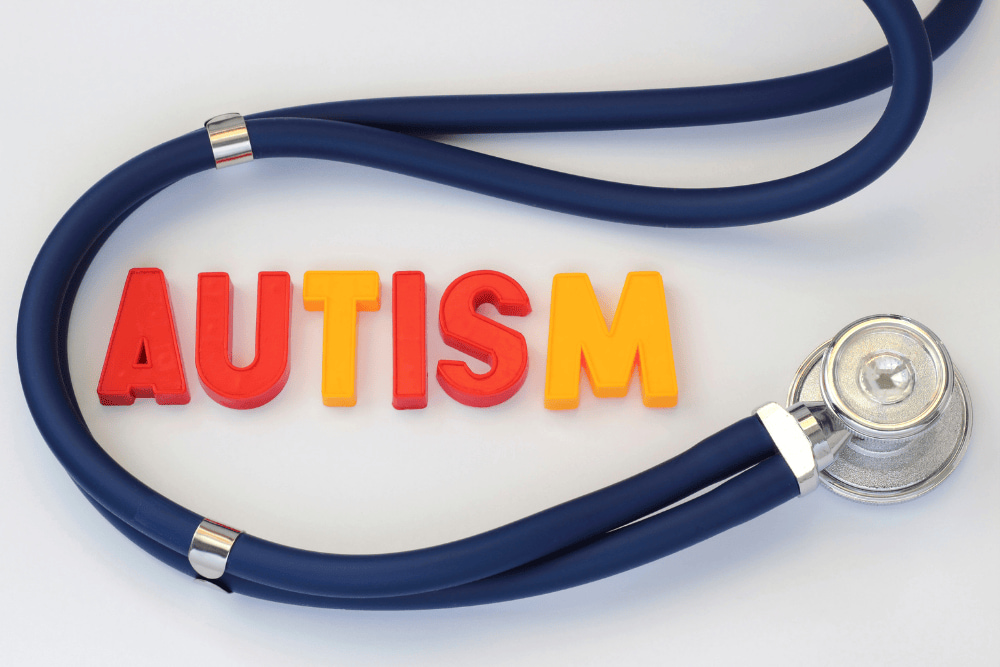Key Takeaways - Autism Life Expectancy
Understanding Autism Life Expectancy
Autism, a neurodevelopmental disorder that affects social interaction, communication, and behavior, has been associated with a lower life expectancy compared to the general population. Above & Beyond Therapy, leaders in ABA services, examines the key factors contributing to this disparity, including co-occurring conditions and limited access to appropriate healthcare.
Does Autism Affect Life Expectancy?
Studies have shown that autistic individuals tend to have a reduced life expectancy. A study conducted in the UK estimated that autistic individuals have a 16-year lower life expectancy compared to the general population, with an average lifespan of 66 years. This reduction in life expectancy is observed across all age groups, with the highest difference seen in adults aged 18-44, where mortality is four times higher than that of the general population.
It's important to note that the diminished lifespan in autistic individuals is not solely attributed to additional co-occurring conditions. Autistic individuals without intellectual disability also experience a similar reduction in life expectancy, suggesting that factors beyond co-occurring conditions contribute to the lower life expectancy.
Why Is Autism Life Expectancy Lower?
Several factors contribute to the reduced life expectancy in individuals with autism. Higher mortality rates are observed in autistic individuals across all age groups, indicating an increased vulnerability to various health risks. Studies have shown that people with autism are nearly 10 times more likely to die from suicide compared to the general population, highlighting the need for mental health support and intervention.
Co-occurring conditions also play a significant role in determining life expectancy in autistic individuals. Many individuals with autism have additional medical and psychiatric conditions, such as epilepsy, gastrointestinal disorders, and mental health disorders, which can impact their overall health and well-being. These co-occurring conditions may contribute to increased mortality rates and a reduced life span.
Access to appropriate healthcare is another critical factor affecting life expectancy in autism. Studies have indicated that individuals with autism face challenges in accessing healthcare and may have limited healthcare support as they transition into adulthood. This limited access to comprehensive healthcare can lead to delayed diagnosis and treatment of medical conditions, potentially impacting life expectancy.
Understanding the connection between autism and life expectancy is crucial for developing strategies to improve outcomes for individuals with autism. By addressing co-occurring conditions, ensuring early diagnosis and intervention, and enhancing healthcare access and support, it is possible to work towards improving the life expectancy and overall well-being of autistic individuals.
Autism Mortality Rates and Risk Factors

When examining autism and life expectancy, it becomes evident that autistic individuals face higher mortality rates compared to the general population.
Mortality rates in autistic individuals are significantly higher across all age groups, with the most substantial difference observed in adults aged 18-44, where mortality is four times higher than in the general population. The factors contributing to this disparity are complex and multifaceted.
What Is the Life Expectancy of Someone With Autism?
The average autistic life expectancy is around 54 years, compared to about 72–75 years in the general population. When considering the life expectancy of individuals with autism, it's important to acknowledge the impact of co-occurring conditions. These additional conditions can influence both the quality of life and overall life expectancy of autistic individuals.
Impact of Co-Occurring Conditions on Autism Life Expectancy
Autistic individuals with co-occurring conditions such as intellectual disability, epilepsy, and mental health disorders have a higher risk of mortality compared to those without these conditions. These co-occurring conditions can contribute to the diminished lifespan observed in this population.
Common Co-Occurring Conditions in Autism
Several co-occurring conditions commonly accompany autism, and they can impact both the physical and mental well-being of autistic individuals. Some of the most prevalent co-occurring conditions include:
- Intellectual Disability: Intellectual disability is frequently associated with autism and can affect an individual's cognitive abilities, adaptive skills, and overall functioning.
- Epilepsy: Autistic individuals have a higher prevalence of epilepsy compared to the general population. The occurrence of seizures can pose additional health challenges and increase the risk of mortality.
- Mental Health Disorders: Conditions such as anxiety, depression, attention-deficit/hyperactivity disorder (ADHD), and obsessive-compulsive disorder (OCD) often co-occur with autism. These mental health disorders can impact an individual's well-being and overall quality of life.
- Gastrointestinal Problems: Many individuals with autism experience gastrointestinal issues such as constipation, diarrhea, and irritable bowel syndrome (IBS). These problems can affect nutrition, digestion, and overall health.
- Sleep Disorders: Sleep disturbances are common in autism, with individuals experiencing difficulties falling asleep, staying asleep, or having irregular sleep patterns. Sleep disorders can impact overall health and quality of life.
Understanding the higher mortality rates and risk factors associated with autism is crucial for developing strategies to improve the health and well-being of autistic individuals. By addressing the specific healthcare needs of this population, providing tailored interventions and support, and implementing regular health assessments and monitoring, we can work towards reducing the life expectancy gap and enhancing the quality of life for autistic individuals.
Improving Life Expectancy in Autism
While individuals with autism tend to have a shorter life expectancy compared to those without the disorder, there are strategies and interventions that can help improve their quality of life and increase their lifespan. Early diagnosis and intervention, along with healthcare strategies tailored to the needs of autistic individuals, play a crucial role in enhancing their overall well-being and life expectancy.
Early Autism Diagnosis and Intervention
Early diagnosis of autism is key to ensuring that individuals receive the appropriate medical care, therapy, and support services they need. By identifying autism at an early age, healthcare providers can intervene with therapies and interventions that target specific challenges and promote skill development.
Early intervention programs, such as Applied Behavior Analysis (ABA), speech therapy, occupational therapy, and social skills training, can help individuals with autism acquire essential skills and overcome challenges. These interventions focus on improving communication, social interaction, behavior management, and daily living skills.
By providing early diagnosis and intervention, individuals with autism can gain the necessary tools and support to navigate the world around them, potentially leading to improved quality of life and better long-term outcomes.
Healthcare Strategies for Autistic Individuals

Developing healthcare strategies specifically designed for autistic individuals is crucial in addressing their unique needs and improving their life expectancy. Healthcare providers should adopt a patient-centered approach that takes into account the individual's sensory sensitivities, communication style, and specific challenges.
It is important for healthcare providers and society as a whole to recognize the unique needs of autistic individuals and work towards improving their life expectancy through early diagnosis, tailored interventions, and comprehensive healthcare strategies. By implementing strategies like autism-friendly healthcare environments, effective communication, and individualized care plans, we can ensure that individuals with autism receive the support and care necessary to lead fulfilling lives.
Addressing Healthcare Needs
To improve the life expectancy and overall well-being of individuals with autism, addressing their healthcare needs is of utmost importance. Tailored interventions and support, along with regular health assessments and monitoring, play a vital role in achieving this goal.
Tailored ASD Interventions and Support
Individuals with autism often have co-occurring medical conditions, which can impact their life expectancy. Tailored interventions that take into account the specific needs and challenges of individuals with autism are crucial. These interventions may include:
- Access to appropriate medical care: Ensuring individuals with autism have access to healthcare providers who understand their unique needs and can provide specialized care.
- Therapy and support services: Providing therapies such as occupational therapy, speech therapy, and behavioral therapy to address developmental and communication challenges.
- Mental health support: Offering psychological support and interventions to address anxiety, depression, and other mental health issues that may co-occur with autism.
By tailoring interventions and support to the specific needs of individuals with autism, it becomes possible to enhance their overall well-being and potentially improve their life expectancy.
Regular Health Assessments and Monitoring
Regular health assessments and monitoring are essential for individuals with autism to ensure early detection and management of any medical conditions. Healthcare providers should conduct comprehensive health assessments that take into account the unique challenges faced by individuals with autism. This may include:
- Regular check-ups: Scheduling routine visits to healthcare providers for general health check-ups and monitoring of any existing medical conditions.
- Screening for co-occurring conditions: Conducting screenings and assessments to identify and manage co-occurring conditions such as epilepsy, gastrointestinal issues, and psychiatric illnesses.
- Health education and guidance: Providing individuals with autism and their caregivers with education and guidance on maintaining a healthy lifestyle, managing medications, and recognizing potential health concerns.
By implementing regular health assessments and monitoring, healthcare providers can identify and address any health issues promptly, thereby improving the overall health outcomes and life expectancy of individuals with autism.
Improving Autism Life Expectancy Through Better Care and Support
Individuals with autism may face some health challenges that can impact their life expectancy, often related to other medical conditions or difficulties in accessing the right care. However, by focusing on their unique needs and providing personalized support and healthcare, individuals with autism can enjoy healthier, happier, and more fulfilling lives.
At Above & Beyond Therapy, we're committed to providing compassionate, individualized care for autistic children, helping them thrive and lead fulfilling lives. Reach out, we're here to support your child’s journey every step of the way.
FAQ: Autism Life Expectancy
What is the lifespan of an autistic person?
The average autistic life expectancy is around 54 years, compared to about 72–75 years in the general population.
Autism with seizures life expectancy is often significantly lower. For autistic individuals with co-occurring intellectual disabilities, sez or epilepsy, the life expectancy can be even lower, sometimes in the 30s to 40s.
Why do people with autism have shorter life expectancy?
Autistic individuals often have a lower life expectancy due to co-occurring conditions like epilepsy, mental health challenges, limited access to quality healthcare, and higher risk of accidents. Social factors like isolation, poverty, and inadequate support also contribute to early mortality.
Does everyone with autism have a shorter lifespan?
Not necessarily. Life expectancy varies widely depending on individual health, support systems, and access to care. Many autistic people live long, healthy lives, especially when their needs are recognized and supported early.
Where can I find support or resources?
Organizations like Above & Beyond Therapy, the Autism Society, and local autism support groups offer resources, education, and services to help families and individuals access the care they need.


.jpg)





.png)



